Nikon cameras have undeniably carved a lasting legacy within the photography community, maintaining their reputation for delivering top-notch bodies and lenses that remain unparalleled in the market. However, like the industry as a whole, Nikon has shifted its focus towards the mirrorless market, recognizing the growing demand and evolving trends. While there is no shortage of exceptional Nikon DSLRs available, mirrorless cameras offer an array of advanced features and are poised to receive even greater support in the future.
That being said, we understand and respect the preferences of those who still favor the DSLR experience. We acknowledge that choosing the best Nikon camera ultimately hinges on your specific requirements. With this in mind, we have thoughtfully curated a comprehensive list catering to a wide range of users, encompassing varying skill levels.
- Best overall: Nikon Z9
- Best high-resolution: Nikon Z7 II
- Best entry-level: Nikon Z50
- Best point-and-shoot: Nikon COOLPIX P1000
- Best low-light: Nikon Z6 II
- Best pro-level DSLR: Nikon D6
- Best budget DSLR: Nikon D3500
Table of Contents
The Methodology Behind Selecting The Finest Nikon Cameras
With decades of camera testing under our belts and a wealth of professional photography knowledge among us, our selection process for this list has been meticulous.
It combines a variety of factors, including hands-on testing, valuable user feedback, meticulous spec comparisons, and comprehensive editorial reviews. Our primary focus in curating this list was to identify the ideal Nikon cameras that cater to specific user requirements. While DSLRs remain a viable option, it is evident that mirrorless cameras possess distinct advantages in terms of numerous features and future system support.
Best Nikon Cameras Review & Recommendations
Best overall: Nikon Z9
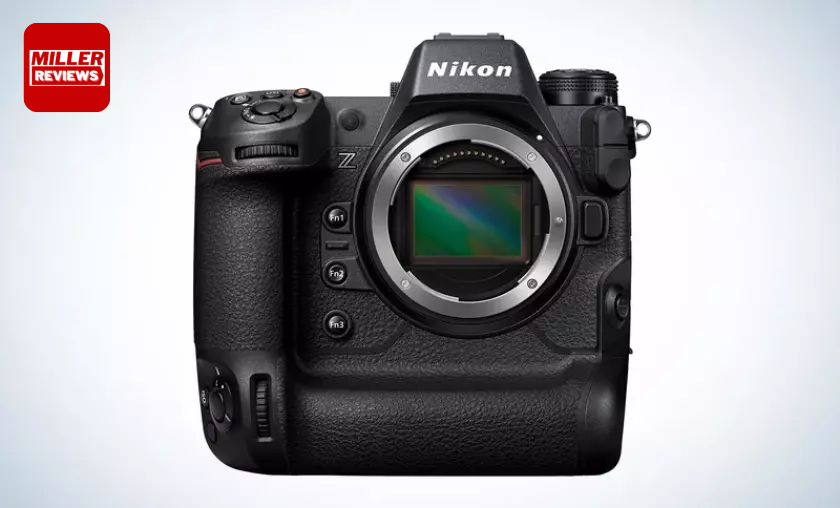
Specs
- Type: Mirrorless
- Resolution: 45.7 megapixels
- Sensor size: Full-frame
- Lens mount: Nikon Z
- Image stabilization: Sensor-Shift, 5-Axis
- Memory card slots: Dual slot, CFexpress Type B / XQD
- Weight: 2.6 pounds
- Dimensions: 5.9 x 5.9 x 3.6 inches
Pros
- 20 fps raw burst shooting
- Super-fast, high-resolution sensor
- 8K video and other advanced motion modes
- Lots of customizability and tactile controls
Cons
- Big
- Expensive
A decade ago, the capabilities of Nikon’s Z9 mirrorless camera would have been deemed nothing short of miraculous. Nikon has managed to create a professional-grade mirrorless camera that is practically equipped to handle any photographic scenario, provided you can manage its substantial size and price.
With its remarkable 45.7-megapixel stacked sensor, the Z9 can swiftly read data, enabling the capture of up to 20 frames per second in full-resolution raw mode. Moreover, it excels in shooting both 8K and high-frame-rate 4K videos. Notably, it boasts Nikon’s most advanced autofocus system to date, exhibiting astonishing precision in tracking subjects.
Having personally spent two weeks extensively using the Z9, I was left astounded by its sheer capabilities. Undeniably, the current price point positions it as a camera exclusively for professionals. However, I am eagerly anticipating the eventual trickle-down of these exceptional features into lower-tier models in the future. Without a doubt, this camera stands as one of the finest ever created, without any reservations.
Best high resolution: Nikon Z7 II
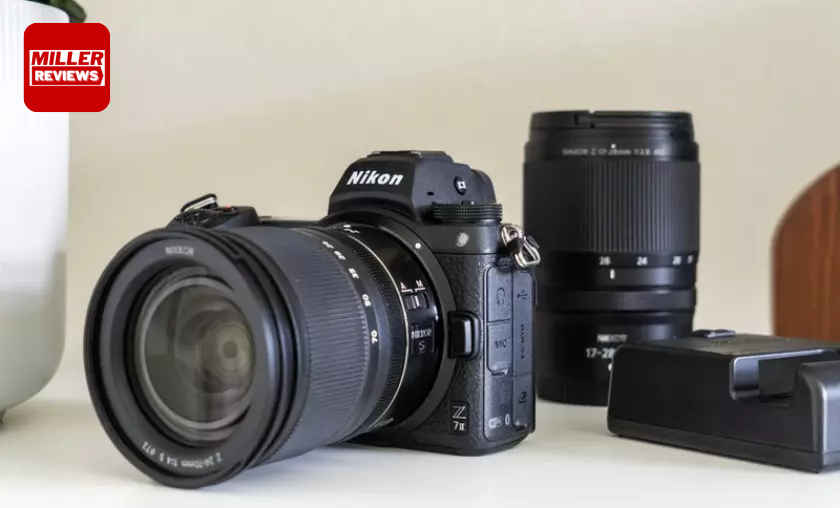
Specs
- Type: Mirrorless
- Resolution: 45.7 megapixels
- Sensor size: Full-frame
- Lens mount: Nikon Z
- Image stabilization: Sensor-Shift, 5-Axis
- Memory card slots: Two slots, CFexpress Type B / XQD and SD/SDHC/SDXC (UHS-II)
- Weight: 1.4 pounds
- Dimensions: 5.3 x 4 x 2.7 inches
Pros
- High-res sensor pulls in lots of details
- Solid weatherproofing for pro work
- Fast memory card support to accommodate high-res images
- Relatively compact for all that resolution
Cons
- Burst mode is just OK
If your primary concern revolves around achieving exceptional resolution and capturing intricate details, without necessarily requiring the lightning-fast capabilities of the Z9, then the Z7 II is undoubtedly a perfect fit for your needs. Boasting a 45.7-megapixel sensor, coupled with Nikon’s most advanced image processor, this camera excels at maintaining low noise levels, mitigating a common challenge associated with high-resolution sensors.
The Z7 II impresses with Nikon’s advanced tracking autofocus system and the inclusion of their excellent matrix metering technology. It confidently captures both 4K video and high-framerate 1080p video. Considering budgetary factors, this pro-grade Nikon camera seamlessly integrates into the workflows of a vast majority of individuals, making it an ideal choice for their photographic endeavors.
Best entry-level: Nikon Z50
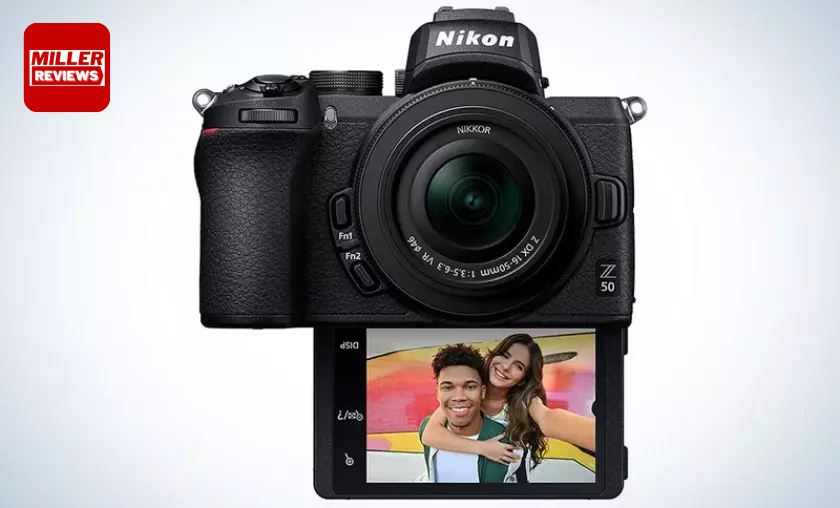
Specs
- Type: Mirrorless
- Resolution: 20.9 megapixels
- Sensor size: APS-C
- Lens mount: Nikon Z DX
- Image stabilization: Digital (video only)
- Memory card slots: Single SD/SDHC/SDXC (UHS-I)
- Weight: 13.93 ounces
- Dimensions: 4.98 x 3.68 x 2.36 inches
Pros
- Compact and light
- Screen flips forward for selfies and vlogging
- Very affordable compared to other Nikon mirrorless offerings
Cons
- Just OK viewfinder
Weighing a mere 14 ounces (body only), the Nikon Z50 with its 20-megapixel sensor presents itself as a compact, APS-C variant of its mirrorless Z-series counterparts. Despite its smaller sensor size, this camera exhibits a robust build quality and features a convenient flip-down touchscreen LCD. The Nikon Z50 caters to the avid enthusiast, offering an extensive range of capabilities, while remaining accessible enough for beginners to grasp.
Impressively swift, the Nikon Z50 enables continuous shooting at a rapid rate of 11 frames per second. Its design is tailored to appeal to vloggers, boasting a flip LCD and the ability to record stunning 4K videos. Should you desire to elevate your photography experience and prefer a full-frame camera, I recommend exploring the 24-megapixel Nikon Z5 as a worthy option.
Best point-and-shoot: Nikon COOLPIX P1000
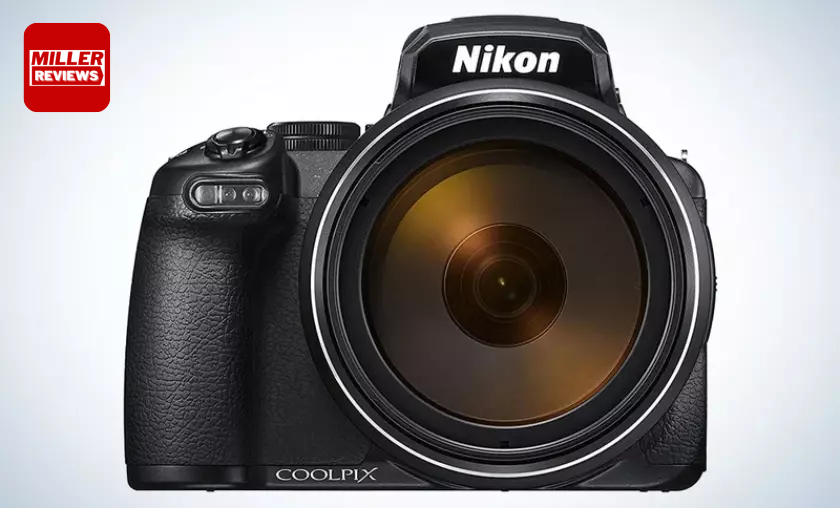
Specs
- Type: Bridge camera
- Resolution: 16 megapixels
- Sensor size: 1/2.3-inch
- Lens mount: N/A, fixed lens
- Image stabilization: Optical in the integrated lens
- Memory card slots: Single SD/SDHC/SDXC
- Weight: 3.11 pounds
- Dimensions: 5.8 x 4.7 x 7.1 inches
Pros
- Massive lens offers the equivalent of a 24-3,000mm lens
- Solid image stabilization
- Tactile controls
- Sturdy grip
Cons
- You absolutely need a tripod for long zooming
Prepare to be astounded by the Nikon P1000, featuring an astonishing 125x zoom and an impressive 3000mm focal length that defies the boundaries of distance. Despite its relatively compact size, this camera empowers you to capture the intricate details of the moon’s craters or snap elusive birds and wildlife while maintaining a comfortable distance. Additionally, the Nikon P1000 incorporates built-in image stabilization, ensuring your photographs are sharp and free from blurring.
On the opposite end of the spectrum, this remarkable camera excels at capturing subjects up close, allowing you to photograph even the smallest details from a mere foot away. With its 16-megapixel sensor, the Nikon P1000 effectively minimizes high ISO noise, delivering exceptional image quality. To further enhance your creative possibilities, this camera even includes a built-in timelapse feature, enabling you to craft captivating time-lapse sequences effortlessly.
Best low-light: Nikon Z6 II
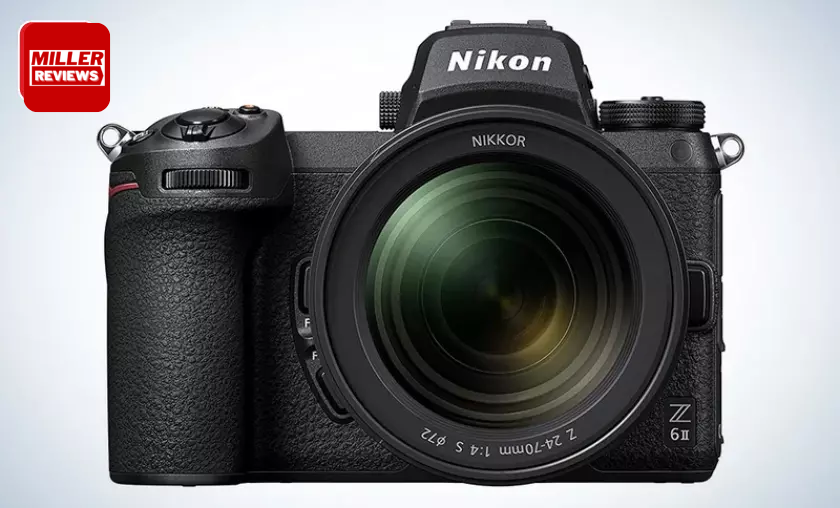
Specs
- Type: Mirrorless
- Resolution: 24.5 megapixels
- Sensor size: Full-frame
- Lens mount: Nikon Z
- Image stabilization: Sensor-Shift, 5-Axis
- Memory card slots: Two slots, CFexpress Type B / XQD and SD/SDHC/SDXC (UHS-II)
- Weight: 1.4 pounds
- Dimensions: 5.3 x 4 x 2.7 inches
Pros
- Very solid feature set
- Excellent image quality
- Customizable controls
- Great low-light performance
Cons
- Fewer tactile controls than the Z7 II
The Nikon Z 6II, a remarkable full-frame mirrorless camera, excels in capturing stunning imagery even in challenging low-light conditions and at high ISO settings. With a native ISO range spanning from 100 to 51,200 and expandable up to an impressive 204,000, this camera offers exceptional sensitivity control.
You have the flexibility to fine-tune the ISO setting in precise increments of third or half EV (exposure compensation), allowing for meticulous adjustments. Thanks to its back-side illuminated sensor, the Z6 II effectively minimizes noise, delivering remarkable image quality even when shooting at elevated ISOs.
When it comes to autofocus capabilities, the Z6 II doesn’t disappoint. With an impressive array of 273 phase-detect autofocus points that cover 90 percent of the frame, this camera ensures precise and reliable focus. Its low-light autofocus performance is particularly commendable, functioning well at approximately -4.5 EV (and -6 EV with low-light AF), eliminating concerns about capturing initial blurry images.
Additionally, the Z6 II is equipped with in-body five-axis sensor shift vibration reduction, providing five stops of compensation. This feature proves invaluable, enabling you to achieve sharp, blur-free photos even in challenging low-light situations.
Best pro-level DSLR: Nikon D6
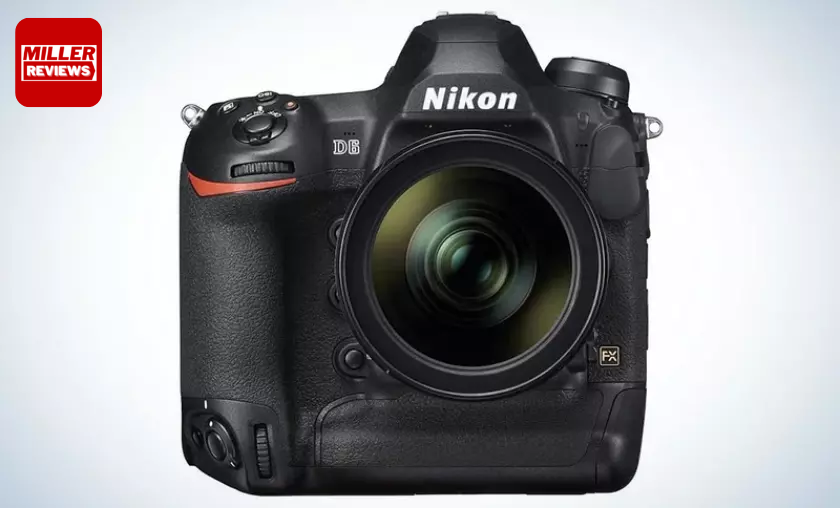
Specs
- Type: DSLR
- Resolution: 20.8 megapixels
- Sensor size: Full-frame
- Lens mount: Nikon F
- Image stabilization: None
- Memory card slots: Dual slot CFexpress Type B / XQD
- Weight: 2.79 pounds
- Dimensions: 6.3 x 6.42 x 3.62 inches
Pros
- Built super tough
- Up to 14 fps shooting
- Full-sized body includes a vertical grip and lots of buttons
Cons
- Big
- Expensive
The Nikon D6, a formidable full-frame DSLR, boasts an impressive continuous capture rate of 14fps. With its rock-solid autofocus system, it guarantees that you won’t miss any fleeting moments, no matter how swiftly they pass before your lens. Designed specifically for professional-level photography, the D6 is the ideal companion for capturing high-end sporting events and serious wildlife encounters. Its remarkable speed and weatherproof construction make it a reliable choice.
However, these top-tier features come at a cost: the D6 is a hefty, bulky camera that demands a considerable investment, so it’s essential to have deep pockets. On the other hand, the Nikon Z6 II, a smaller and lighter full-frame mirrorless camera, matches the D6’s impressive 14fps speed while being priced at less than half of its counterpart.
Though the Z9 may have garnered some attention, the D6 remains a go-to camera for sports photographers who prioritize lower resolution for faster transmission and a zero-lag viewfinder to capture ultra-fast action.
Best budget DSLR: Nikon D3500
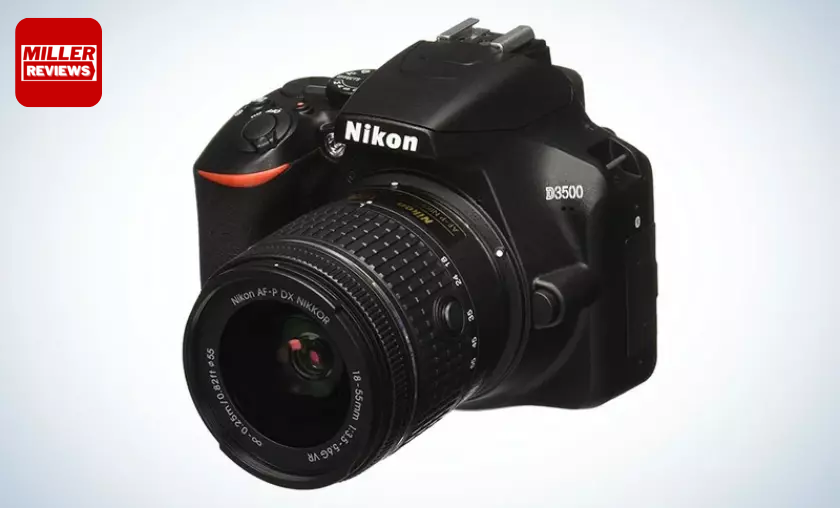
Specs
- Type: DSLR
- Resolution: 24.2 megapixels
- Sensor size: APS-C
- Lens mount: Nikon F DX
- Image stabilization: None
- Memory card slots: Single slot, SD/SDHC/SDXC (UHS-I)
- Weight: 12.88 ounces
- Dimensions: 4.9 x 3.8 x 2.7 inches
Pros
- Very small and light
- Solid image quality
- Helpful automatic modes for beginners
Cons
- Plastic construction
- Very limited tactile controls
The Nikon D3500 APS-C DSLR, though it may be a seasoned player in the market, is primarily available as a used option. Nevertheless, it remains a reliable choice, particularly for beginners and individuals with budget constraints. What’s more, it conveniently comes bundled with an 18-55mm lens, ensuring you’re all set for just a little over $600.
The D3500 boasts a range of features tailored for those venturing into the world of photography. As your skills evolve, it grants you access to manual settings, allowing you to expand your capabilities and grow alongside the camera. With its highly compact and lightweight design, it becomes effortlessly portable, making it an excellent companion for your travels. And despite its affordable price, it still delivers commendable image quality, enabling you to capture shots you’ll take pride in.
Key Factors to Consider When Selecting the Best Nikon Cameras
Determining the ideal Nikon camera for your unique photographic requirements boils down to a matter of personal preference. Whether you lean towards a DSLR, mirrorless camera, or any other configuration, it’s crucial to invest in features that align with your specific needs.
Our goal is to highlight the notable strengths of what we believe are the finest Nikon cameras currently on the market. Armed with this information, you’ll be empowered to discern which option will best cater to your needs, complement your shooting style, and align with your artistic interests.
DSLR vs. Mirrorless
Merely a few years ago, this query would have had a clear-cut answer. Nikon may have been tardy to join the mirrorless trend, but it made an entrance with unwavering determination. Presently, Nikon has redirected a significant portion of its attention towards mirrorless cameras, promising an influx of diverse lens options in the near future.
However, it’s important to note that Nikon’s existing DSLR lineup still boasts a vibrant vitality, offering ample opportunities. As more photographers make the transition to mirrorless, you might stumble upon exceptional deals on F-mount lenses, making it an opportune time to explore the possibilities.
Do you Need a Pro Camera?
When it comes to pro-level cameras, they encompass a fusion of premium features and robustness, delivering a seamless blend of high-speed shooting and exceptional image quality. It’s imperative to seek out a camera with a sturdy, weather-sealed construction, ideally accompanied by dual card slots for swift and abundant media storage.
Look for impressive burst capacity, precise autofocus, and minimal noise performance in dimly lit environments. For those inclined towards capturing action-packed moments, be it wildlife or sports, a camera’s frames-per-second continuous shooting capability serves as a reliable indicator of its ability to seize the desired shot. Naturally, the autofocus and tracking systems also play a pivotal role in successfully freezing the majestic flight of an eagle or capturing that game-winning touchdown.
Resolution
The resolution race has finally reached its conclusion, or at least it seems that way. Nowadays, some of the finest Nikon cameras revolve around sensors that provide roughly double the resolution of their counterparts. While cameras sporting 45-megapixel sensors may not cater to everyone’s needs, considering the larger file sizes and the requisite computing power and storage for processing and archiving, high-resolution cameras do offer notable advantages.
One of the primary benefits, particularly for most individuals, is the ability to crop an image more tightly than cameras with lower pixel counts. This capability proves invaluable when you find yourself unable to physically approach a subject or zoom in closely with your lens to achieve an optimal composition.
What are your Actual Needs?
If you find yourself captivated by the allure of mirrorless cameras but wish to stay within a reasonable budget and avoid the overwhelm of excessive features, then Nikon’s entry-level mirrorless models deserve your attention. These cameras strike a balance by offering ample features to foster the growth and refinement of your photographic skills, all contained within compact bodies.
Naturally, a camera’s size and weight hold great significance, especially for those constantly on the move, whether embarking on an all-day trek in nature or embarking on a long-awaited dream vacation. If you possess smaller hands, it becomes crucial to find a camera that incorporates essential controls within convenient reach and is light enough to be comfortably held for extended periods. Conversely, if you have larger hands, a compact model might feel confining, making it essential to test the camera’s ergonomics before committing to a purchase.
Fixed Lens vs. Interchangeable Lens
While it’s true that the availability of compact and bridge cameras has become somewhat limited compared to the past, there are still a handful of exceptional Nikon models that stand out in the market. It’s important to note that the term “point-and-shoot” no longer solely refers to a rudimentary camera designed solely for basic snapshots. Instead, it categorizes cameras that lack interchangeable lenses. So, don’t be misled—within this category, you’ll discover point-and-shoot models with unique capabilities that are simply unmatched elsewhere, such as astonishingly powerful super-long zoom lenses.
Low-light Shooting
Versatility is key for most photographers, and that versatility extends from video capabilities to low-light performance. Since artificial light is not always available (or desirable), the ability to shoot at high ISOs while maintaining detail and sharpness is key. Results at high ISO are usually best when shooting and processing RAW files but the camera should be able to deliver low noise in JPEG files as well.
Although some people enable built-in high ISO noise reduction, we found it’s usually best to disable this feature (or set it at the lowest level) and handle any noise reduction when post-processing RAW files. Another key factor is the camera’s ability to focus under low light and low contrast conditions.
Budget
Similar to any other product category, camera prices tend to rise in accordance with the extent of features and performance they offer. However, there are undoubtedly bargains to be found, particularly if you don’t require the absolute latest in technology or an abundance of extravagant features. Considering that advancements in digital cameras often exhibit evolutionary or relatively minor improvements from one iteration to the next, it might not be worthwhile to splurge on the newest and most cutting-edge model.
Additionally, as new camera models enter the market, older ones experience a decline in price while retaining their original capabilities. Therefore, it’s wise to explore camera models that have withstood the test of time, as they can present remarkable opportunities to seize a great deal.
Conclusion
- Best overall: Nikon Z9
- Best high-resolution: Nikon Z7 II
- Best entry-level: Nikon Z50
- Best point-and-shoot: Nikon COOLPIX P1000
- Best low-light: Nikon Z6 II
- Best pro-level DSLR: Nikon D6
- Best budget DSLR: Nikon D3500
When embarking on the journey of purchasing a camera, it becomes imperative to align its features and body design with your unique needs and photographic style. Remember, investing in a camera is a significant commitment, so it’s crucial to contemplate the direction you envision for your photographic skills and ensure that the chosen camera will cater to your requirements not just in the present, but also for the foreseeable future.
FAQs
Q: Which Nikon DSLR is the most recent model available?
Nikon’s latest DSLR camera, the magnificent 20.8-megapixel full-frame D6, stands proudly in the realm of professional-level cameras, accompanied by a price tag of $6,500. This remarkable device boasts a blazing-fast continuous shooting rate of 14 frames per second and a native ISO range spanning from 100 to 102400. With its robust construction, complete with extensive weather sealing and a reinforced shutter mechanism, the D6 is a true workhorse designed to endure the trials faced by dedicated professionals.
Q: Which Nikon camera holds the highest price tag?
Nikon’s pinnacle of luxury comes in the form of the illustrious D6, the crème de la crème of their camera lineup. As previously highlighted, this professional-grade marvel is adorned with a plethora of cutting-edge features, tailored specifically for discerning photographers who demand nothing short of extraordinary image quality and unparalleled performance. While the Z9 holds the distinction of being Nikon’s most expensive mirrorless camera, it trails behind the D6 by approximately one thousand dollars at the time of this writing, cementing the D6’s reign as the ultimate pinnacle of photographic excellence.
Q: Which Nikon camera is the most affordable option available?
Nikon’s entry-level option, the Nikon Coolpix B600, takes the spotlight as their most affordable camera. This compact point-and-shoot gem may be a bit elusive to find brand new these days. However, fear not! For those seeking a readily accessible option, Nikon presents the Z30 as their most budget-friendly mirrorless camera, offering a gateway to the world of versatile and high-quality photography without breaking the bank.
For More amazing articles related to Tech Check out our website Over Here
To Read more similar articles click here
Thanks for visiting our Website. If you appreciate our work, kindly show us some support in our comments section 🙂